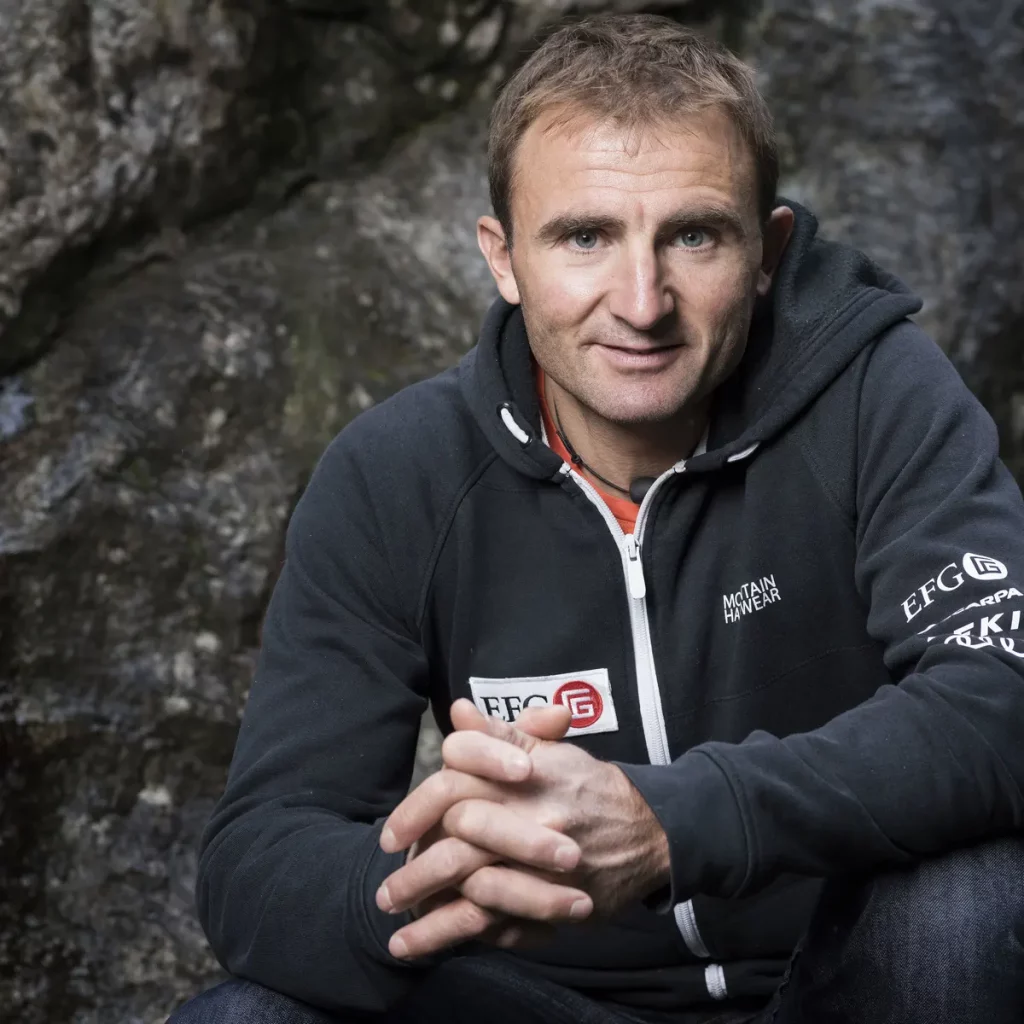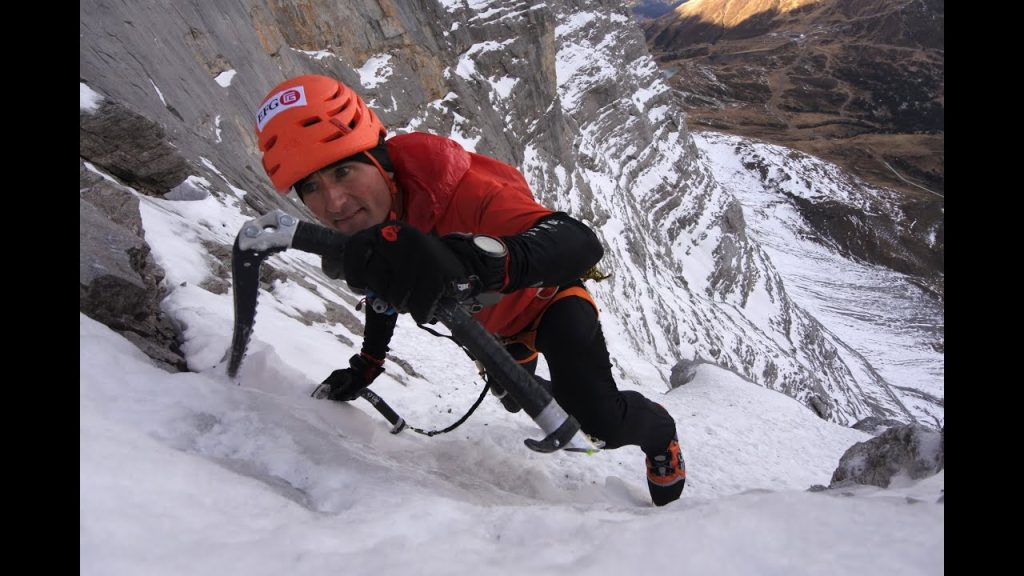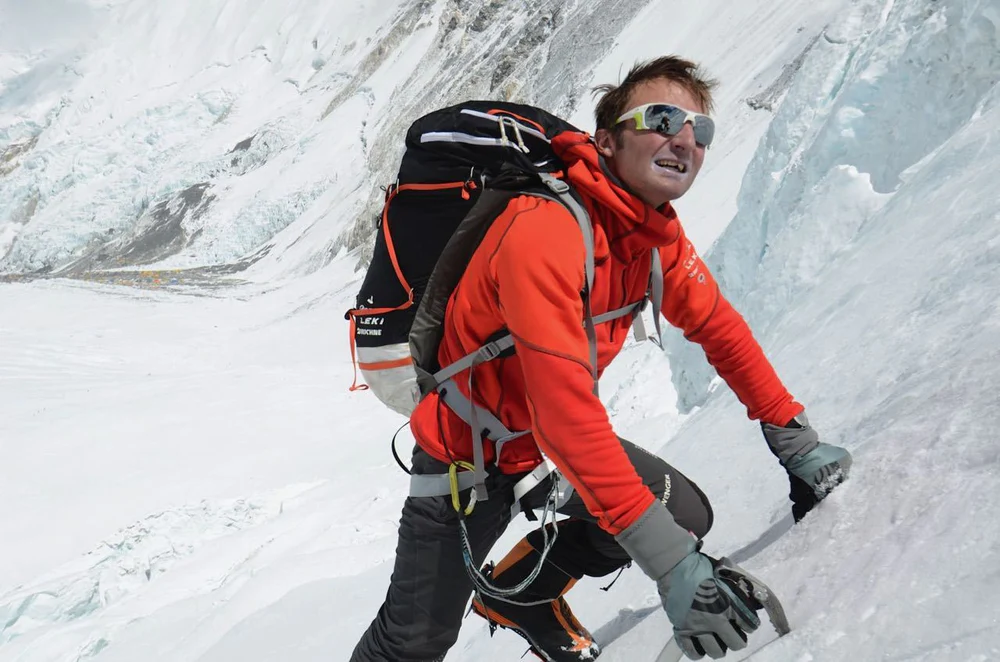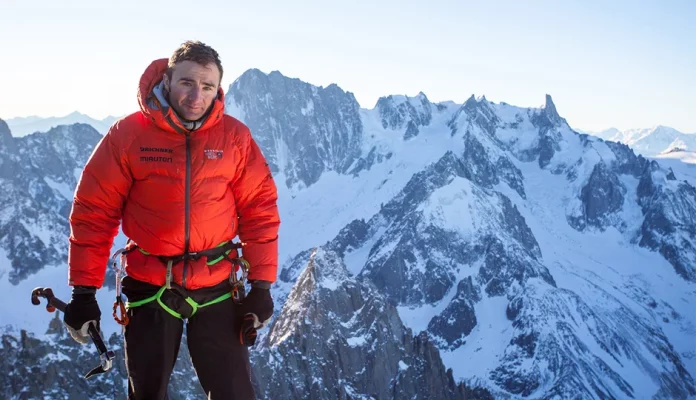What Happened to Ueli Steck on Everest – Ueli Steck, affectionately known as the “Swiss Machine,” was revered by mountaineers worldwide for his extraordinary alpine climbing prowess. This article delves deep into his remarkable life and career and the circumstances leading up to his untimely demise.
Ueli Steck’s story goes beyond conquering mountains; it inspires climbers and outdoor enthusiasts worldwide. His legacy lives on through climbers like you, who continue to carry forward his remarkable achievements.
The Netflix documentary film ‘Race to the Summit,’ originally titled ‘Duell Am Abgrund,’ provides an engaging insight into Ueli Steck’s life and his pursuit of mountaineering excellence. Directed by Nicholas de Taranto and Gotz Werner, this action-packed sports movie takes audiences on an exhilarating journey through Switzerland’s stunning Alpine range, where Steck and his climbing partner Dani Arnold set astonishing speed records. This documentary was released worldwide on October 4, 2023, promising a truly thrilling experience complete with English subtitles and dubbed audio for accessibility.

Who Was Ueli Steck?
Ueli Steck was an undisputed master of climbing. He was born on October 4, 1976, in Langnau, Emmental, Switzerland, and grew up with two older brothers who were active in ice hockey. While occasionally joining them on the rink or ski trips with his father, he ultimately found his true calling in the mountains.
Steck’s journey into mountaineering began when Fritz Morgenthaler, a family friend and rock climbing instructor in Schrattenfluh, introduced him to climbing. This introduction ignited his lifelong passion.
At the age of 16, Steck was already tackling some of the toughest ascents in the Alps and gaining recognition from his fellow climbers. By 17, he had achieved nine difficulty ratings from the UIAA for climbing, foreshadowing his future successes.
Ueli Steck’s Climbing Career
Steck’s climbing career continued to reach new heights each year. In 2004, he and Stephan Siegrist achieved an astounding feat by climbing Eiger, Monch, and Jungfrau within just 25 hours. This accomplishment earned them widespread acclaim and solidified Steck’s reputation as an alpine climbing sensation.
The following year, he embarked on an audacious solo climb of Cholatse and Taboche as part of the Khumbu-Express Expedition. According to Climb magazine, these daring solo climbs and innovative approaches catapulted him into the ranks of Europe’s premier alpinists.
As internet and media use increased, Steck recognized its potential as a platform to maintain sponsorships and showcase his extraordinary talents. He made waves in 2007 when he set a world record by climbing the north face of Eiger in just 3 hours and 54 minutes. In 2008, he outdid himself, finishing it in just over 2 hours and 47 minutes!
Ueli Steck was honored to receive the Eiger Award in 2008 for his exceptional contributions to mountaineering. However, his sights were set higher—Himalayas were calling.
In 2012, he performed an extraordinary feat by summiting Mount Everest without using oxygen cylinders for additional support. His remarkable achievement showcased his resilience and determination when facing some of the world’s most treacherous terrain.

What Records Did Ueli Steck Set?
Remarkable records and achievements marked Ueli Steck’s climbing career. In 2014, he earned his second Piolet d’Or, considered the “Oscar of mountaineering,” for his daring solo ascent of Annapurna South Face in Nepal, despite suffering a near-fatal fall on the same mountain in 2007. This monumental achievement is all the more noteworthy considering that Ueli had faced near death by falling off that mountain just six years earlier!
Steck’s most remarkable feat was summiting all 82 peaks over 4,000 meters in just 62 days without using motorized vehicles. He accomplished this in 2015, demonstrating his exceptional dedication to the sport.
Steck’s passion for speed in mountaineering was evident in his record-setting climbs. Within one year of accomplishing his Alps feat, he outpaced Dani Arnold by solo climbing the north face of Eiger in just 2 hours and 22 minutes—an achievement few could rival!
What Happened to Ueli Steck on Everest?
Ueli Steck was on the verge of attempting an audacious feat that had only been accomplished once before climbing both the Hornbein route and Lhotse without returning to the Everest summit. Steck prepared meticulously for his attempt, confident that this audacious plan would become a reality.
However, the expedition encountered a setback when one of his climbing companions, Tenji Sherpa, suffered frostbite. Despite this setback, Steck continued his mission and made an ascent to Everest Camp 2 to acclimatize before continuing his journey.
On April 29, 2017, Ueli Steck made an important decision: He informed Tenji Sherpa of his plan to climb Nuptse the following day to prepare for an imminent ascent of Everest. With unwavering dedication, he embarked on this solo endeavor with unparalleled determination.
Ueli Steck began his ascent of Everest at 4:30 AM on April 30, 2017, alongside French climber Yannick Graziani, with Graziani heading towards Everest while Steck headed toward Nuptse. Although some sherpas and fellow expedition members witnessed his ascent, his final moments remain unclear due to an unknown incident that resulted in Ueli’s tragic fall.

How Did Ueli Steck Die?
Ueli Steck’s death on April 30, 2017, sent shockwaves through the mountaineering community. His lifeless body was discovered at the base of Mount Nuptse, serving as a stark reminder of the unforgiving terrain of the Himalayas. It is estimated that he had reached 300 meters below the summit before suffering a terrifying fall of 1,000 meters (3,280 feet).
The precise cause of his fall remains a mystery, leading to questions and speculation in its wake. His body was found in the Western Cwm, nestled between Everest Camp 1 and Camp 2. It was transported back to Kathmandu, where memorial services were held in his honor.
Ueli Steck’s tragic end remains an area of inquiry and reflection. His family has requested fair and responsible media coverage, as their loss has deeply devastated them. They have called upon reporters not to perpetuate an inaccurate portrayal.
As reliable information became available, people engaged in imaginative storytelling to fill the void until more details emerged.
Steck’s death left an incredible void in the world of mountaineering. Tributes from fellow climbers and enthusiasts poured in, honoring him for his contributions. His legacy will live on as it inspires future generations to push the boundaries of human achievement, even in some of Earth’s harshest landscapes.
Ueli Steck was more than a climber; he was an innovator, record-breaker, and a source of inspiration to millions. His audacity and determination led him to summit some of the most formidable mountains globally, solidifying his place among mountaineering legends.
As we remember Ueli Steck, it is also important to recognize the inherent risks and harsh environment of mountain climbing that he so passionately embraced. His death is an untimely reminder of how mountaineers must balance triumph and tragedy in their endeavors.
Ueli Steck lives on in our hearts as an inspiration, motivating us all to reach higher, explore further, and push past what is believed to be possible. His memory lives on through stories about his incredible climbs and indomitable spirit shared with the world.
As we pay our respects to Ueli Steck and his incredible accomplishments as “The Swiss Machine,” mountaineering continues to honor his legacy.
Also Read: Street Flow 2 Review: Exploring the Urban Drama of the Traore Brothers




